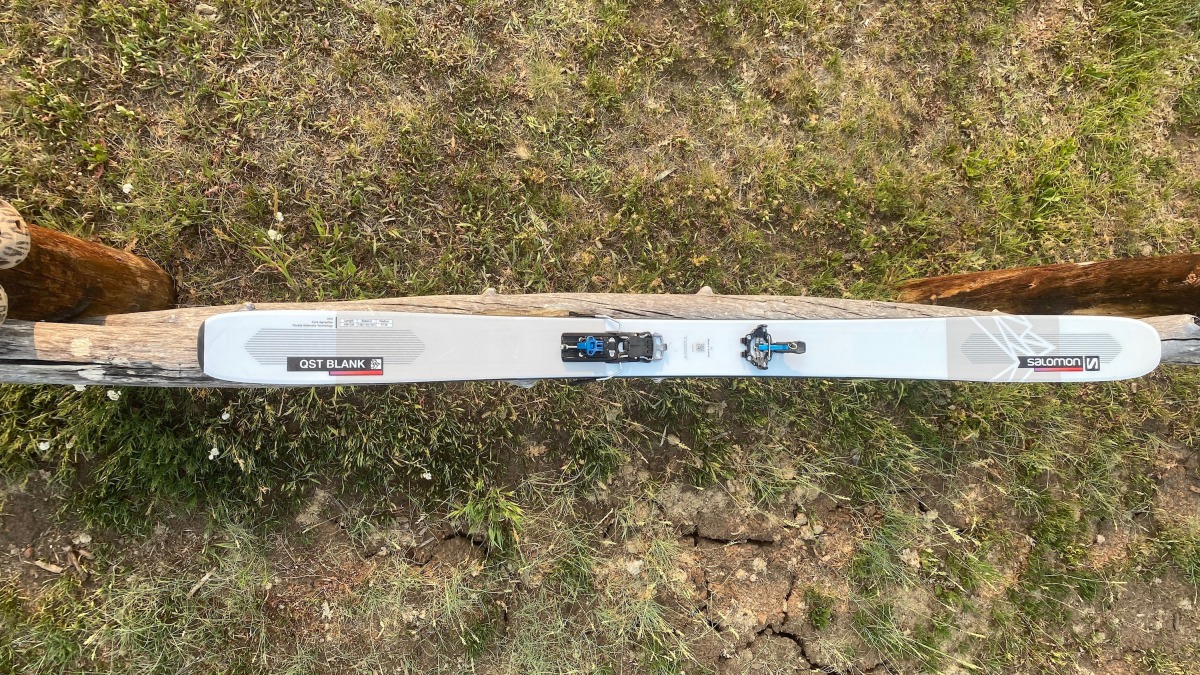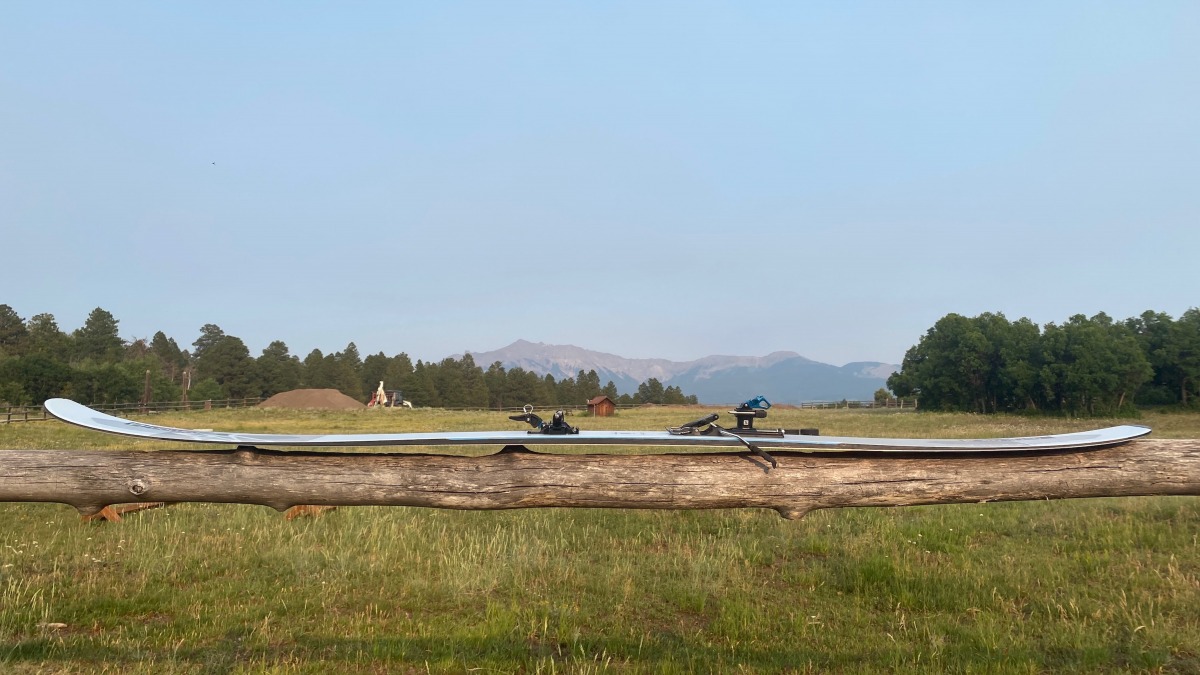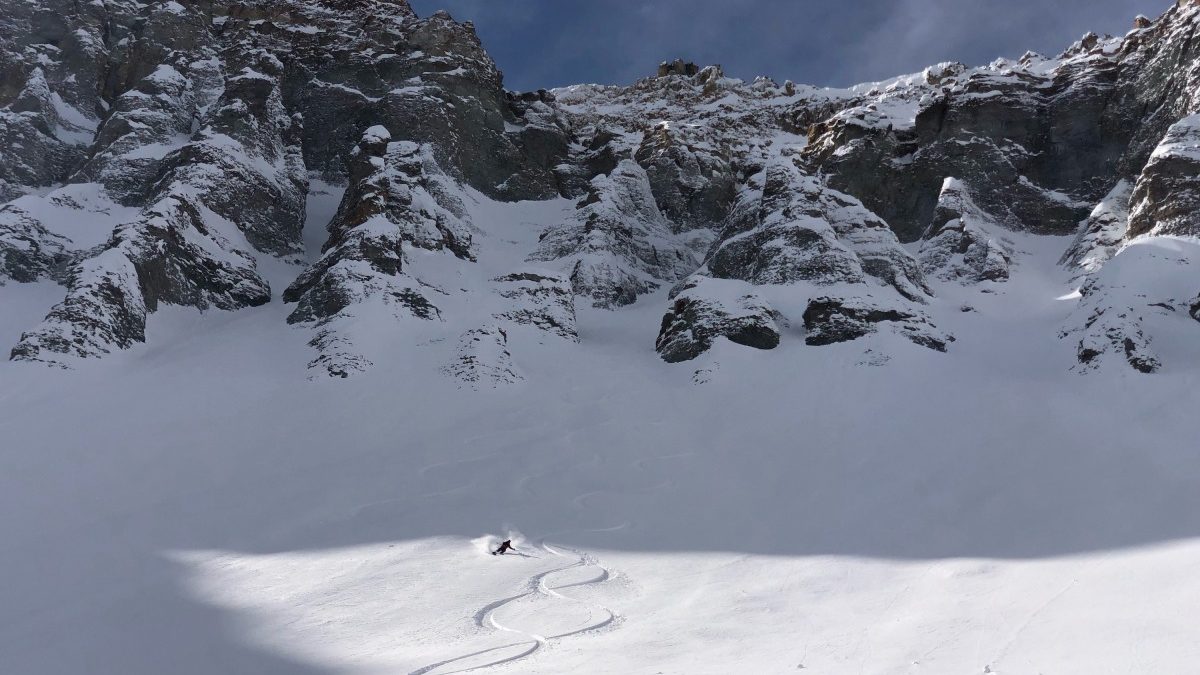Exploring the virtues of a heavy, soft touring ski
The Salomon QST BLANK is a new wide ski offering in the 21/22 QST lineup (replacing the QST 118). Salomon says the BLANK is a ‘progressive and playful freeride powder ski.’ I tested the BLANK through the lens of human-powered-only ski touring. For testing, the skis were paired with a Salomon MTN bindings and Tecnica Zero G Pro Tour boot.
Here’s a brief summary of the QST BLANK design:
— 112 mm waist width (full dimensions: 138-112-127)
— 17 m turning radius
— 2220 gram weight (per ski)
— Long and shallow rocker in the tip and tail with shallow camber underfoot
— Blunt squared nose and tapered tail
— Soft flex in the tip and tail with mild-stiff flex underfoot
The BLANK didn’t fall into a typical backcountry ski category. The heavy construction suggests it to be a ‘powerful freeride ski.’ But the shallow rocker profile, short turning radius, and soft flex pattern speak more to a ‘playful pivoty powder ski.’ Getting on snow was the most productive measure to assess where the QST BLANK stood within the world of backcountry skis.
Construction
The QST BLANK has a stable, damp, and heavy construction. At its center is a poplar wood core. Then a lot of fancy capital-word technologies are added to the ski. C/FX — a proprietary weave of carbon fiber and flax — is layered into the tip and tail. C/FX works two ways: the carbon fiber provides rigidity and responsiveness while the flax provides dampening and stability. All of the QST line up has C/FX. The ratio of carbon-fiber-to-flax is adjusted to change each model’s particular performance characteristics. More carbon fiber means more lively and lighter. More flax means more stable and heavier. The BLANK also features Double Sidewall Technology. This is a full circumference ABS sidewall and additional ABS material near the center of the ski. It’s said to improve edge engagement and power transfer. Cork Damplifiers are added below the translucent topsheet in the tip and tail. These are cork inserts to help prevent chatter in the rockered tip and tail. To finish the build — a layer of fiberglass, full circumference metal edge, topsheet and PTEX base are added to the ski.
What surprised me about the BLANK’s design and construction was the combination of a soft flex pattern and heavy weight. So often weight is cut away from backcountry skis while still attempting to maintain stiffness. Go to any ski touring shop and two things will happen when someone picks up a ski:
Said customer will…
Lift and bob ski in the air to assess overall mass
Place ski tail on ground, brace ski tip with upper hand, then flex ski in center to crudely assess stiffness.
First, this rarely gives a customer quality information because, unless you compulsively compare ski’s measured weight and stiffness to each other, you’ll have no reference for your touring ski weight/stiffness assessment.
Second, touring skis shouldn’t be measured by the sole metric of their weight-to-stiffness ratio. Weight savings is good for touring skis to save energy while touring uphill. Stiffness is good to provide potential energy while skiing downhill. But added weight can prevent ski deflection while in crudy snow and soft ski flex can add stability and dampening. My point being: added weight and softer flex patterns can actually improve a backcountry touring ski (!). Touring performance is not all about the lightest and stiffness ski you can find.
Experimentation
Because of the ski’s heavy weight, my testing was preloaded with a high expectation for downhill performance. 2220 grams is a lot for a backcountry touring ski. Some other >2000 gram skis are the Blizzard Rustler 11 (2000 grams), Head Kore 117 (2100 grams), and Black Crows Anima (2200 grams). These mentioned skis have competed in the Freeride World Tour, charged Alaskan spines, and/or launched 40+ foot cliffs. The QST BLANK shares a similar weight with these skis, but has a more playful design with its ample rocker profile, short turning radius, and softer flex pattern. I learned the heavy weight/soft flex combo creates a smooth, creamy downhill skiing experience. In comparison, a heavy/stiff ski (like the ones mentioned at the beginning of the paragraph) will be more aggressive and manage faster speeds, but at the expense of a ‘stiff suspension’.
Here’s the story of my day out with the BLANKs:
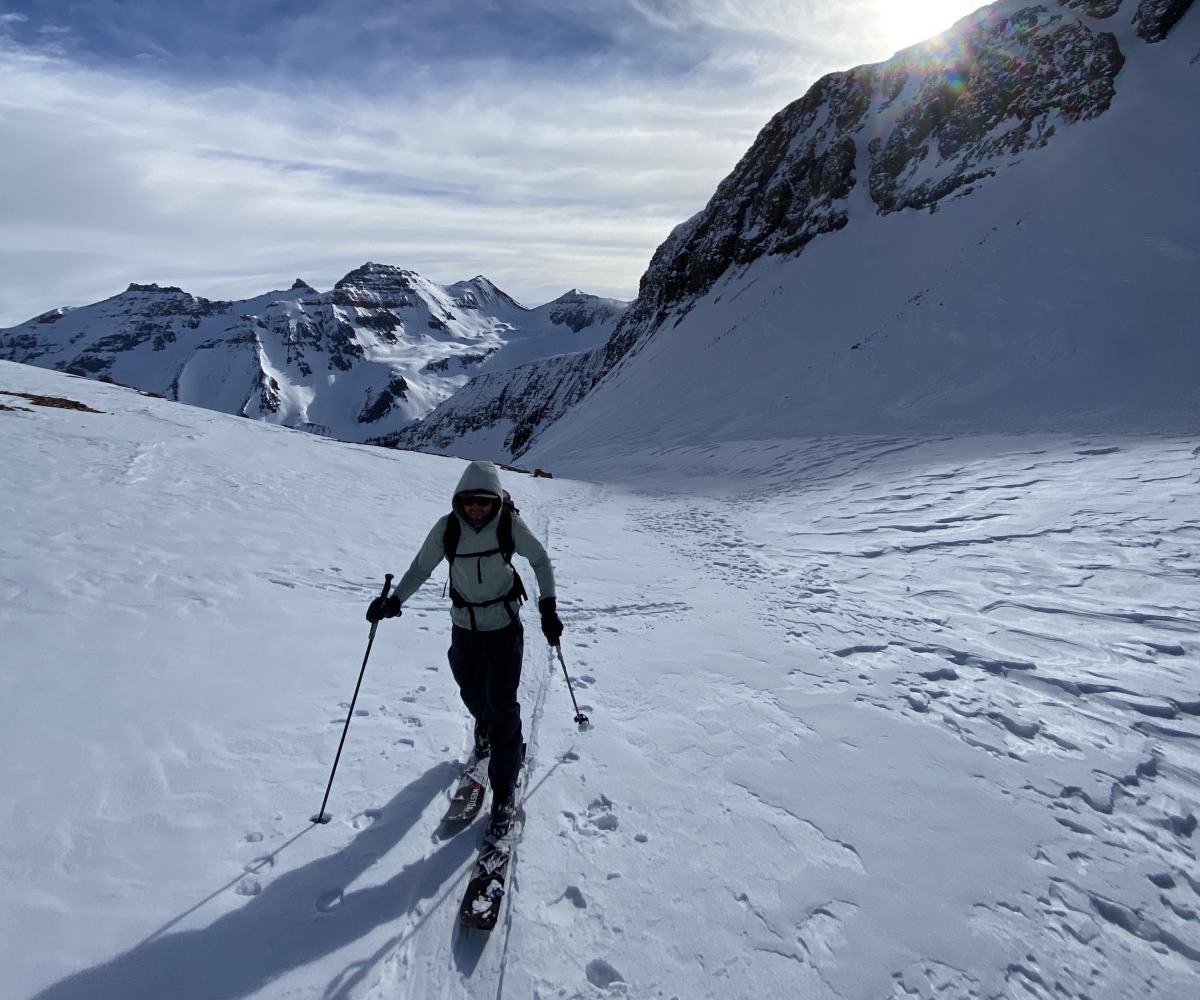
Coop ascends the alpine basin with stunning cloud cover behind. I’m sucking wind in front of him because the QST BLANKs are heavier than my average setup.
My friends Coop, Jamie and I went on a pre-work ski tour: in town early, 4000 feet of elevation gain, and a no-headlamp start time. The tour started with a flat approach, veered up a gladed drainage, gained an alpine basin, and topped out on a hidden NE-facing couloir. The couloir dog legged into a rolling moraine, traversed through treeline mini golf skiing, then reconnected with the flat approach. It was a classic morning tour — including good company, good snow, good weather, and a good pair of skis.
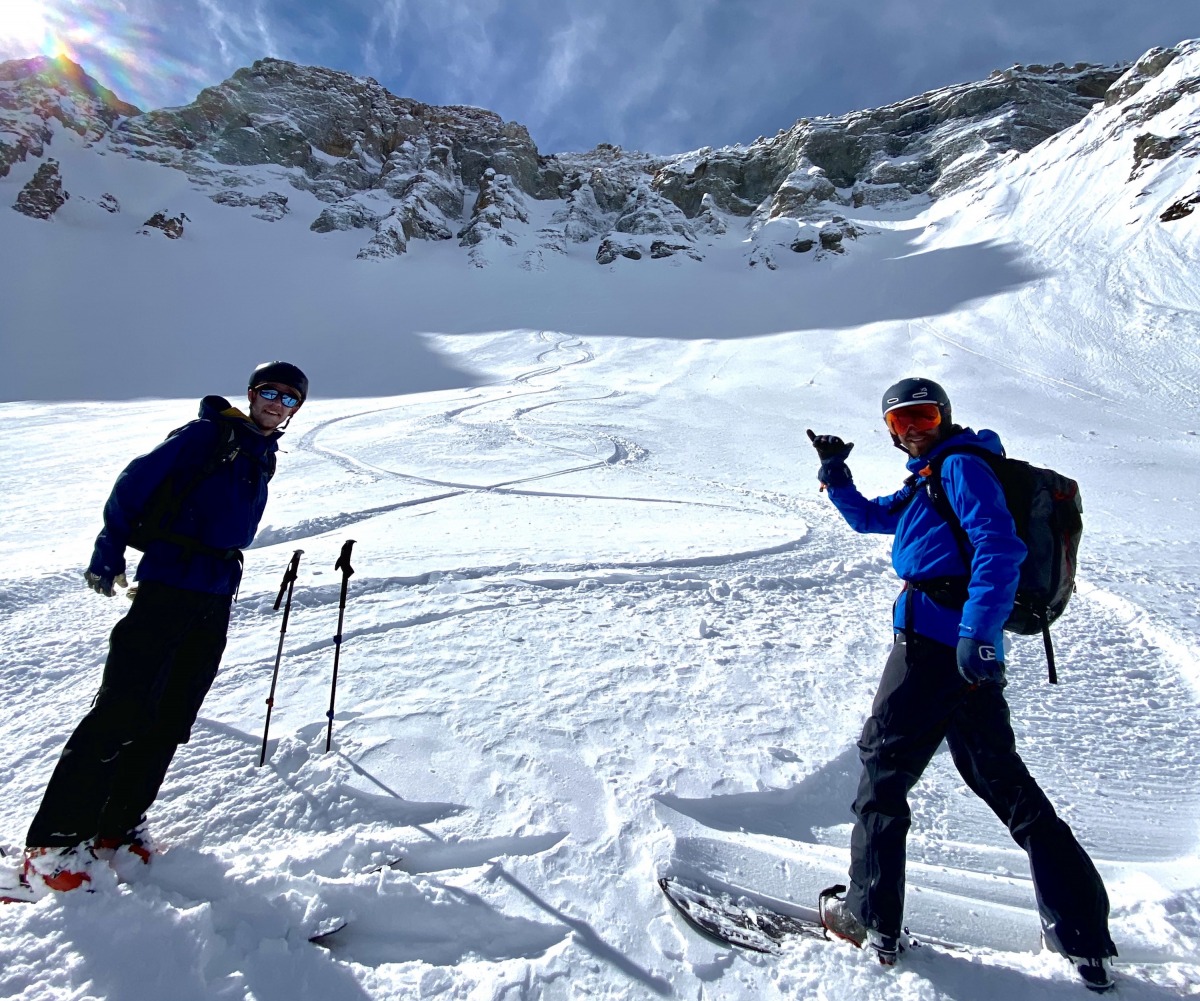
Jamie and Coop are psyched after a beautiful run with quality wind-rippled powder. The QST BLANKs devoured the ‘fast-pow’ conditions.
The QST BLANK’s were heavy on the uphill. I dragged my legs to keep up with Jamie and Coop. We transitioned at the top of the couloir to downhill ski mode. The BLANKs were nimble in the tight couloir with their short turning radius and rockered tips and tails. I washed out turns, slashed tails around corners, and quietly grinned at their ease of handling. The couloir opened up to the rolling moraine. I leaned into the skis with an aggressive wide stance and arched large-radius turns down the apron. I was shook at how quiet the skis felt the whole way down. They traced undisturbed turns down the slope. They skied smooth. This was the heavy weight/soft flex at play. Woah.
We finished the run, skated out the flat approach, and made it back to town in time for work. I was slightly disappointed at how tired my legs felt after 4000’ of climbing, but concurrently, I was smitten for the smooth, silky descent the QST BLANKs provided that fine winter morning.
Conclusion
QST BLANK broadened my perspective of touring skis. Touring skis can be heavy. Heavy touring skis can be soft. A heavy, soft touring ski can be fun. That’s what the QST BLANK is: a soft, heavy touring ski with a modern design and construction. The BLANK is good at making downhill skiing stable, smooth and playful. It’s bad at keeping you out in the backcountry for long days or speeding up the skintrack. So is this heavy, soft touring ski worth the weight? If you want a ski with Cadillac-level suspension, yes it is. If you want to have energy for another lap, maybe not.
Slator Aplin lives in the San Juans. He enjoys time spent in the mountains, pastries paired with coffee, and adventures-gone-wrong. You can often find him outside Telluride’s local bakery — Baked in Telluride.

